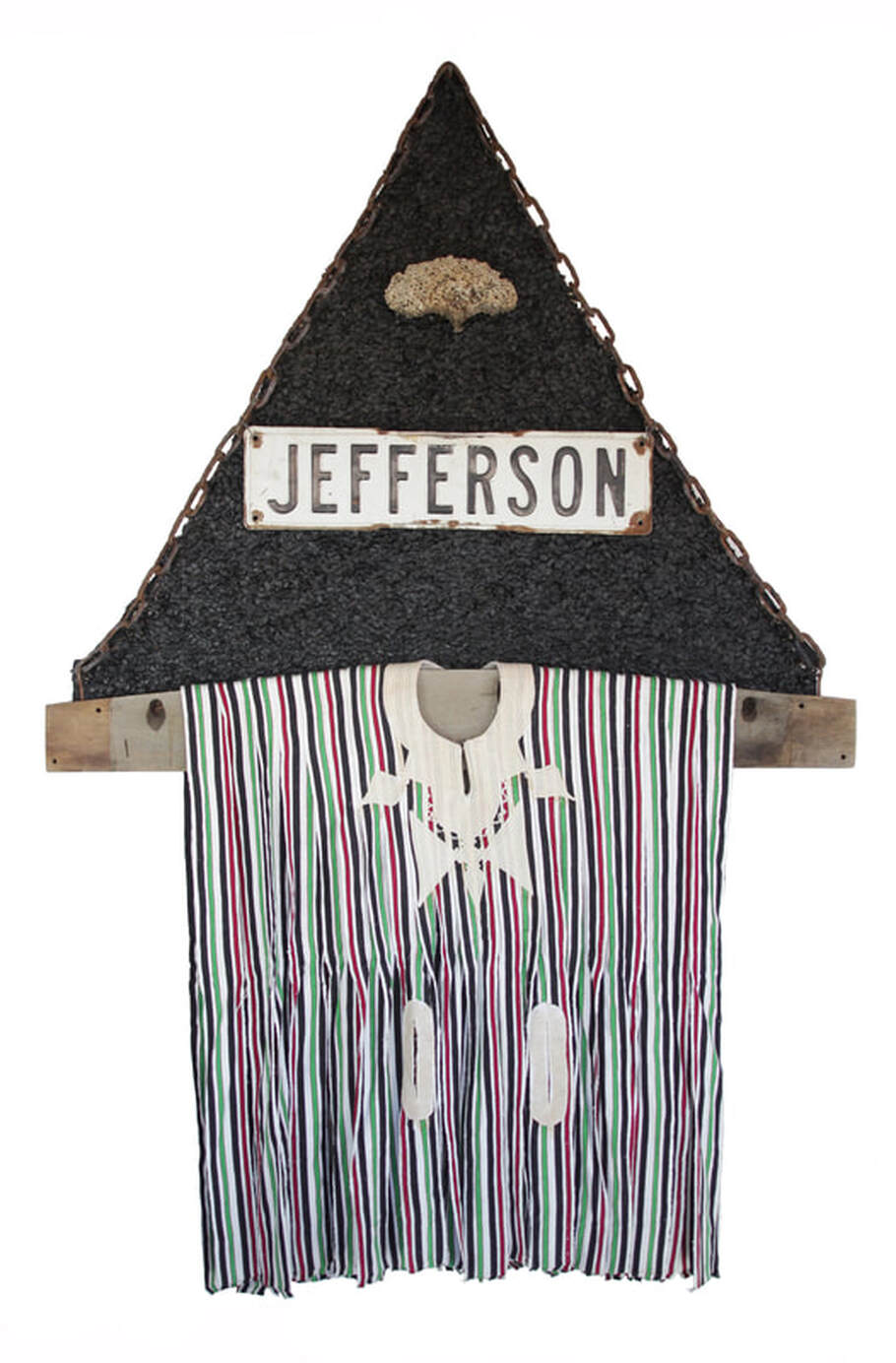- Home
- Bio / CV
-
Art Gallery
- Confluence Exhibition New Works (2022) >
- series: identity theft (2017-2022) >
- series: environment: capped >
- series: confined (2017-2022) >
- Otis College Residency: 2018 >
- Repurposed Objects: 2013-2019 >
- Re-purposed Objects: 2010-2012 >
- Visual Poetry >
- Gallery: Abstract Paintings >
- Gallery: Representational Paintings 2008-2010 >
- Gallery: Representational Paintings 2006-2007 >
- Furniture >
- Poetry Gallery
- Residencies
- Books
- Fine Art Reproductions
- Original Art Purchase
- News / Events
- Photo Gallery
- MY LIBRARY: Art Reviews, Books, Catalogues, Pamphlets, Ephemera
- Contact
- Browser Instructions
identity theft: jefferson

After legalized slavery ended, many freed slaves took last names that were thought to be prestigious, such as the names of former U.S. Presidents. Ironically, many of the names taken were of slave owning Presidents. Watermelons were one of the items slaves were able to grow and sell after slavery to create income and lift themselves from poverty. Commerce was good. Hateful caucasians created negative caricatures and stereotypes of Blacks eating watermelons that still exist today, over 150 years later. There are 3.5 pounds of watermelon seeds used as a backdrop in this work. The oak board was part of a southern courthouse record room table used to hold record books, which held recordings of property documents, including chattel slave records.
Assemblage: oak wood, wire, watermelon seeds, acrylic medium, deconstructed aṣọ òkè Ghanaian hand woven cotton fugu (smock), wasp nest from my grandmothers southern farm, galvanized steel hardware cloth, iron chain, steel sign
H 72" x W 48" x D 3"
(2017)
H 72" x W 48" x D 3"
(2017)
